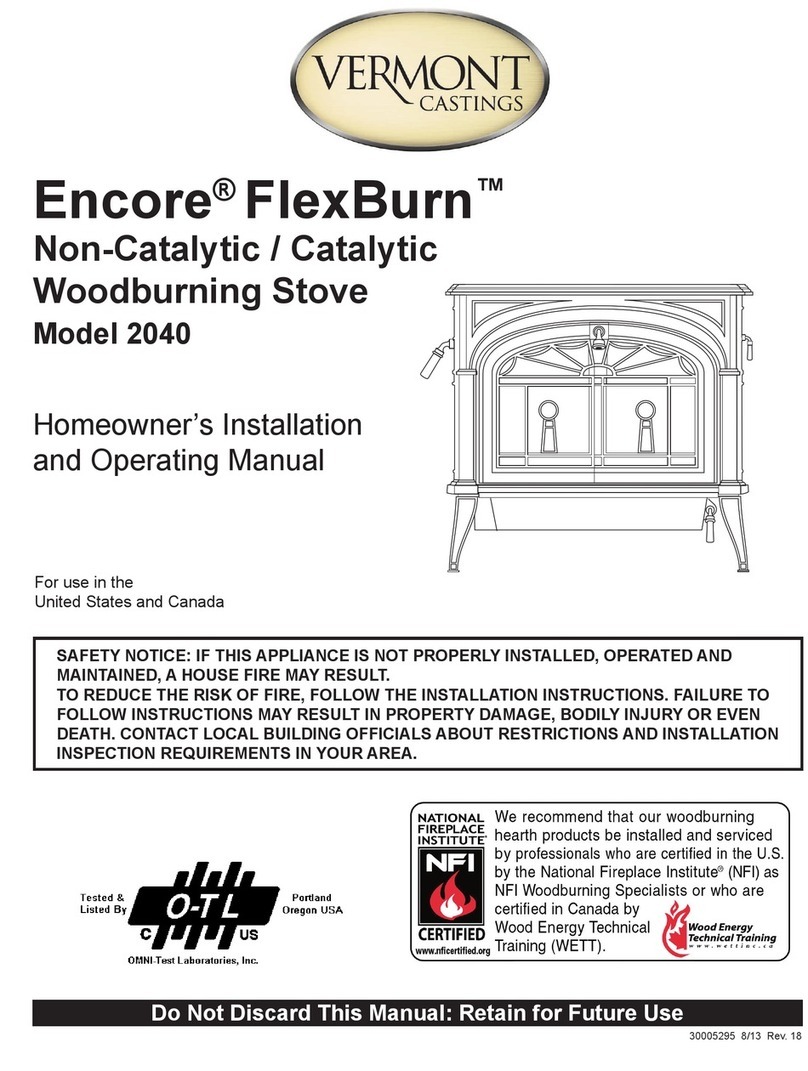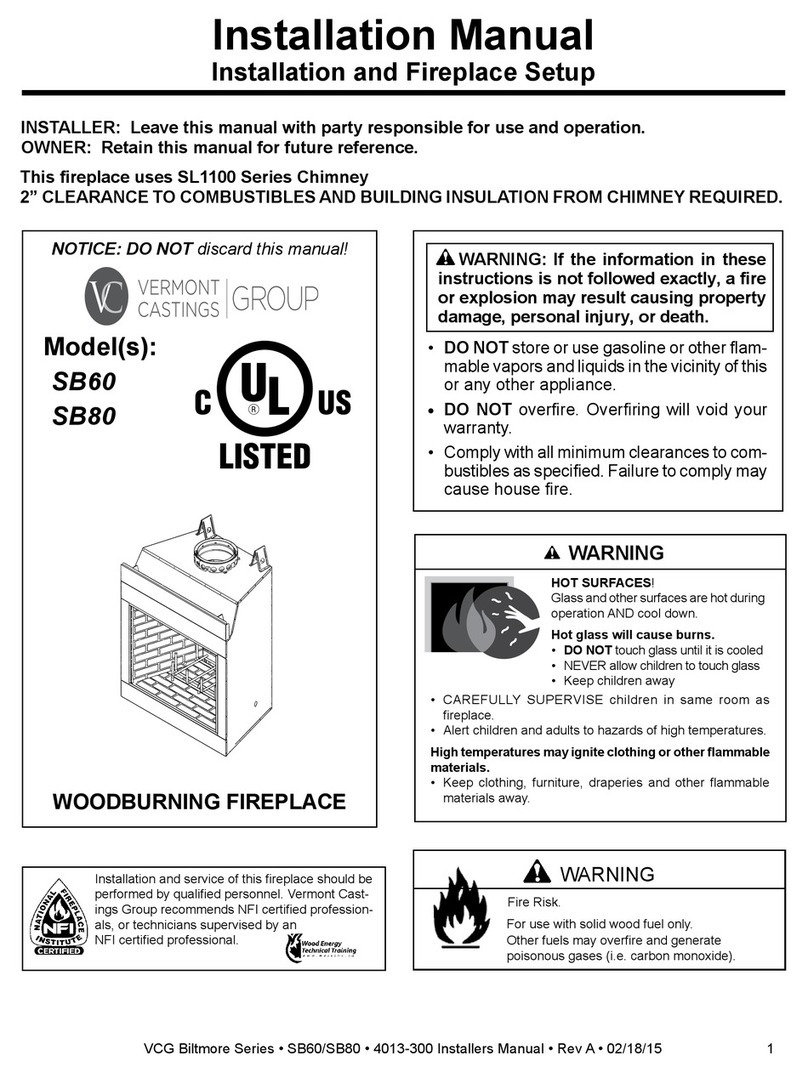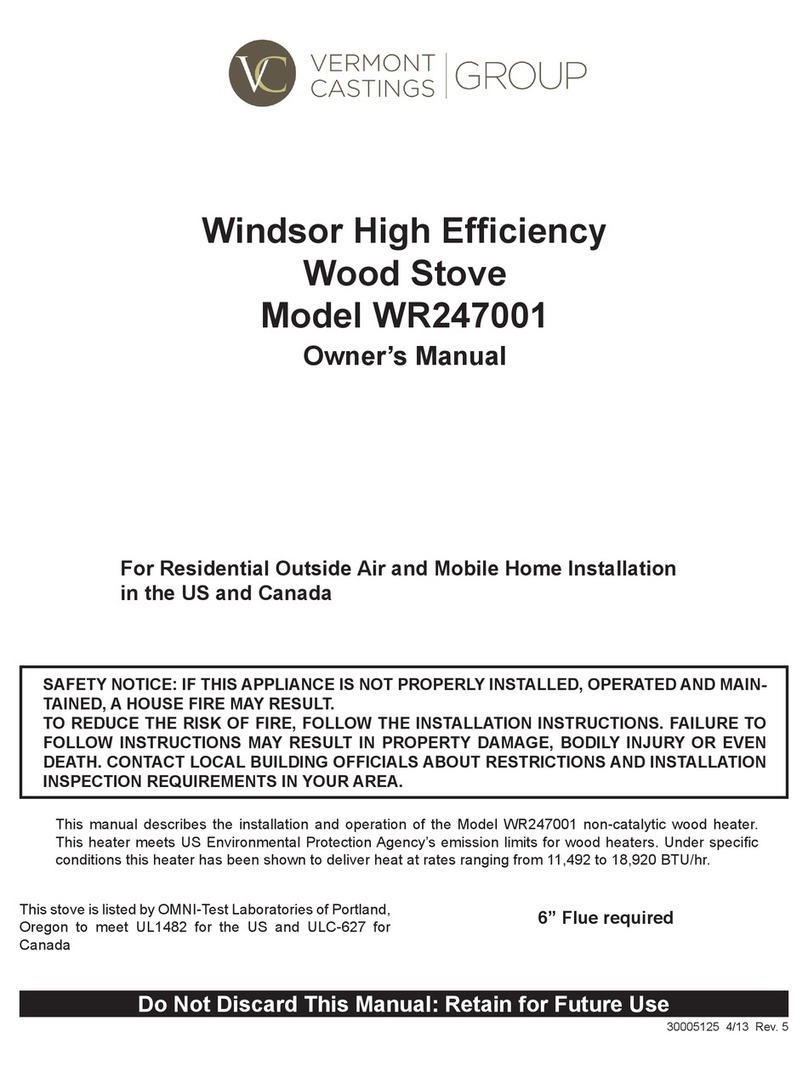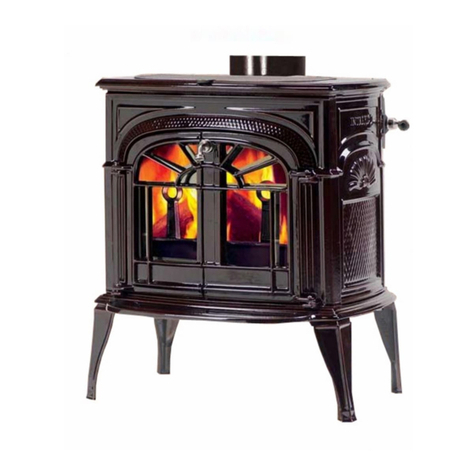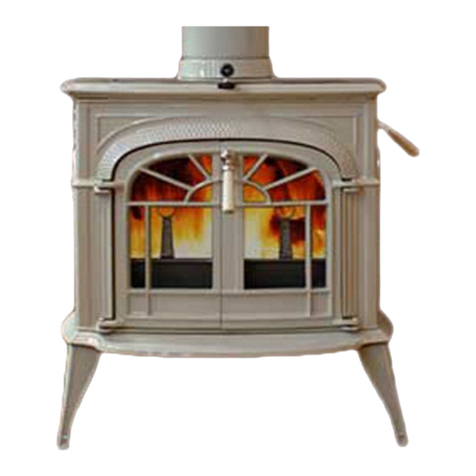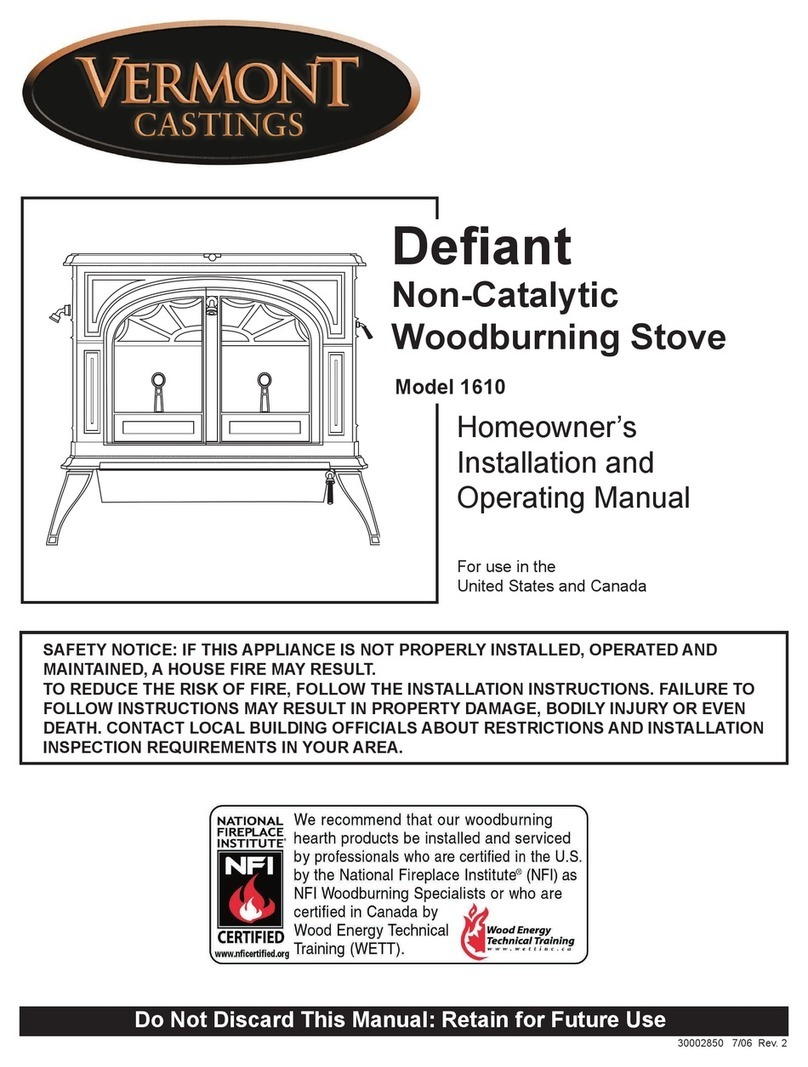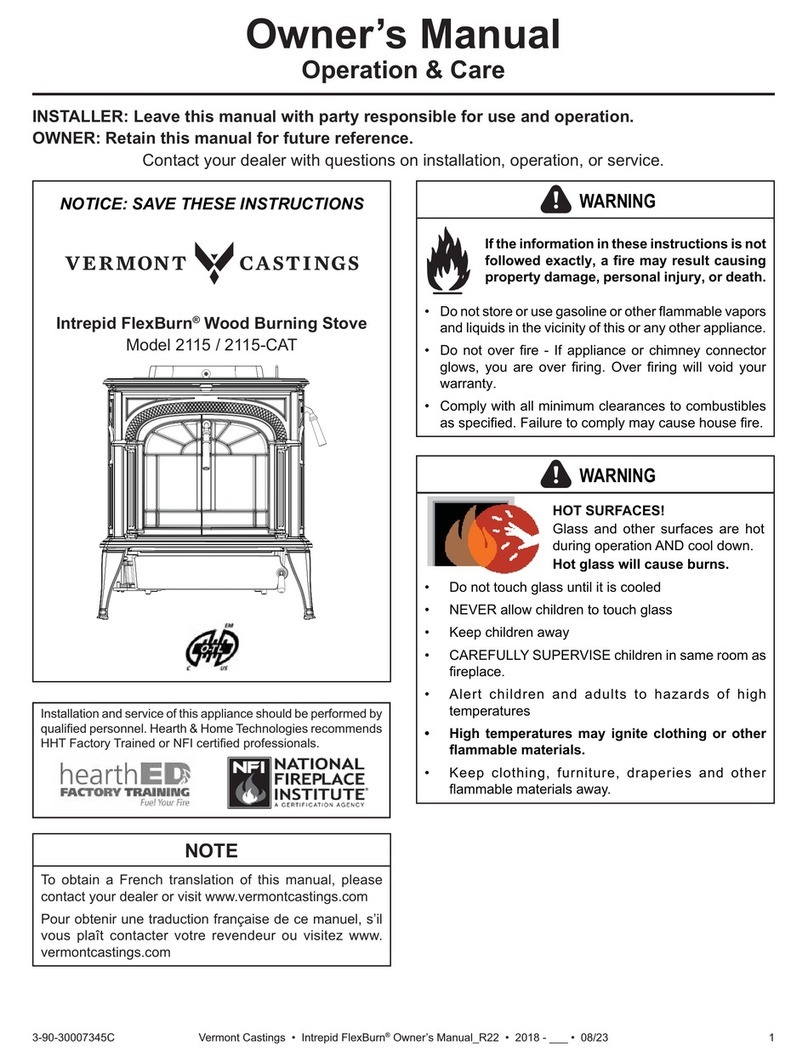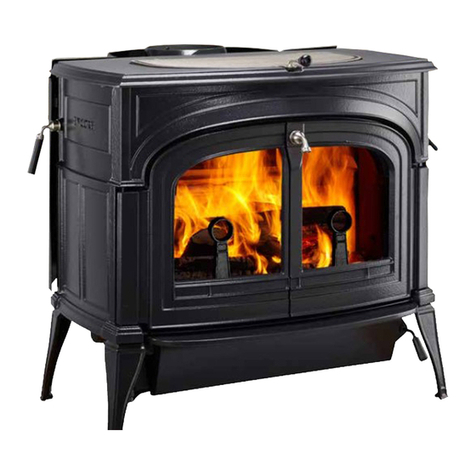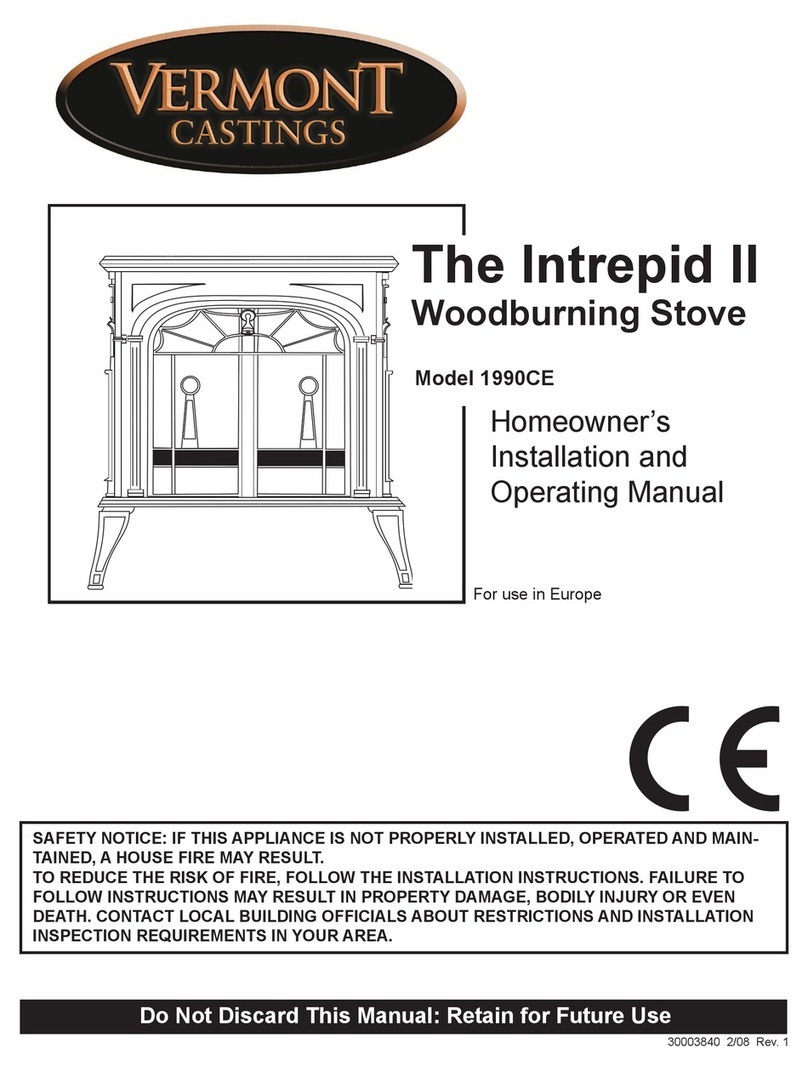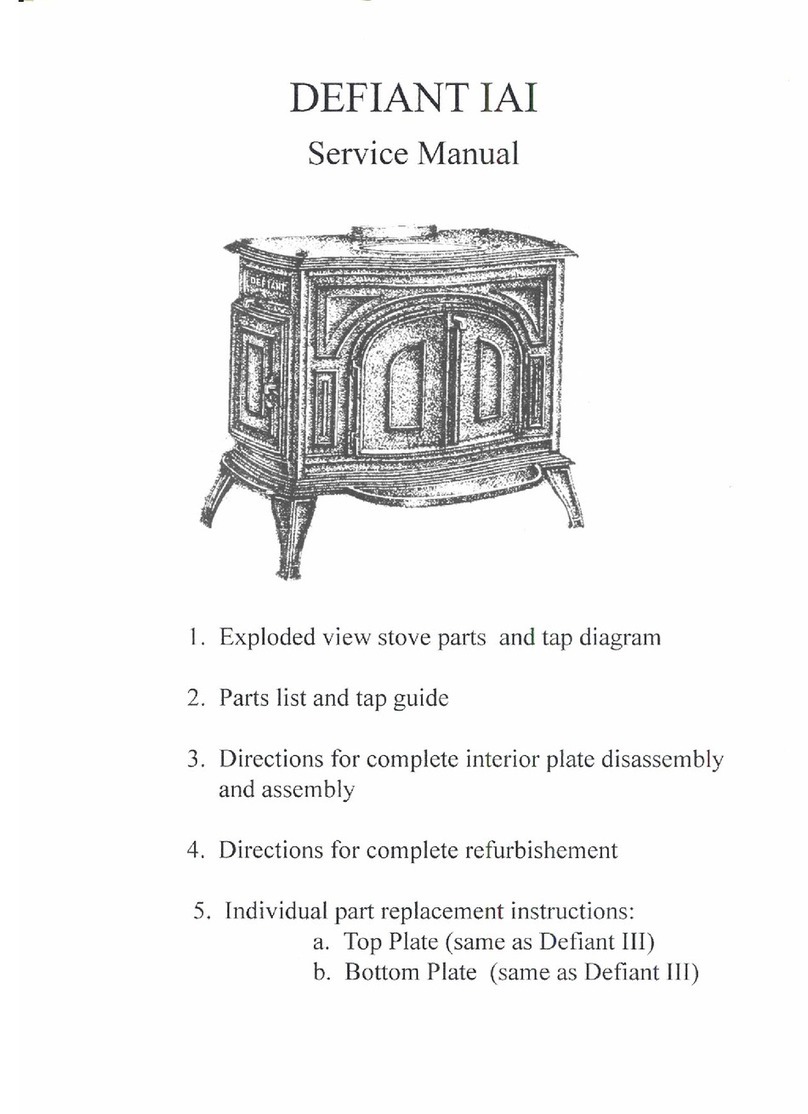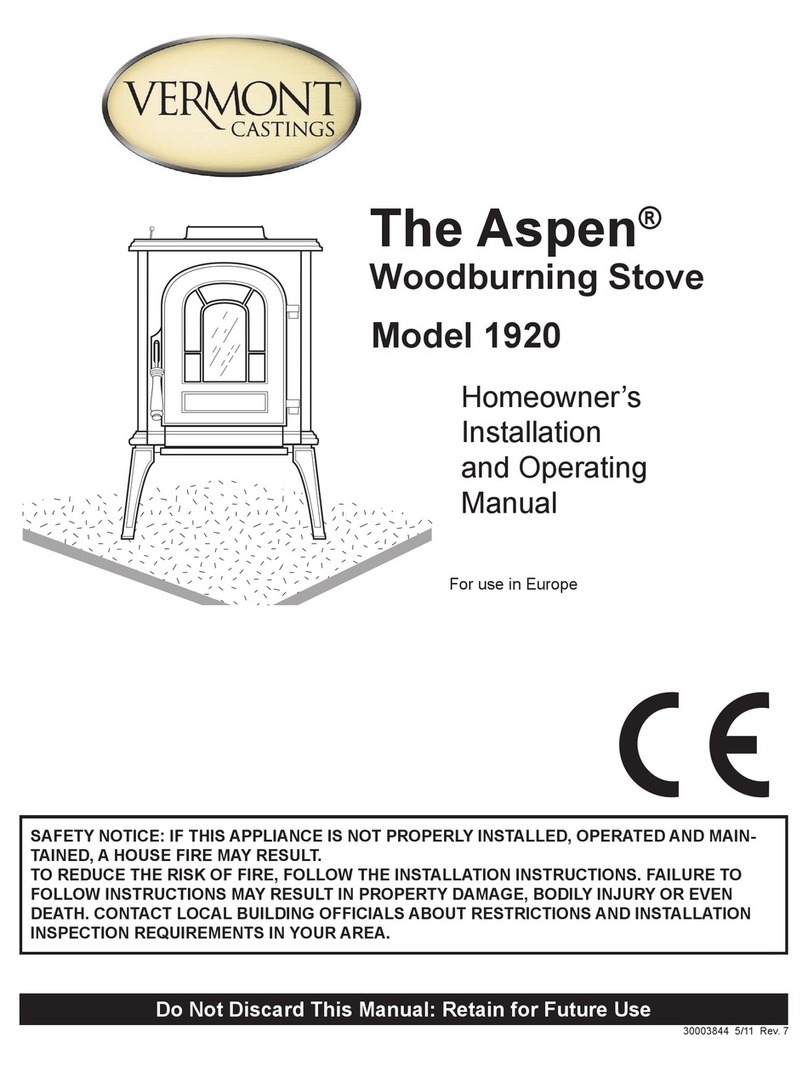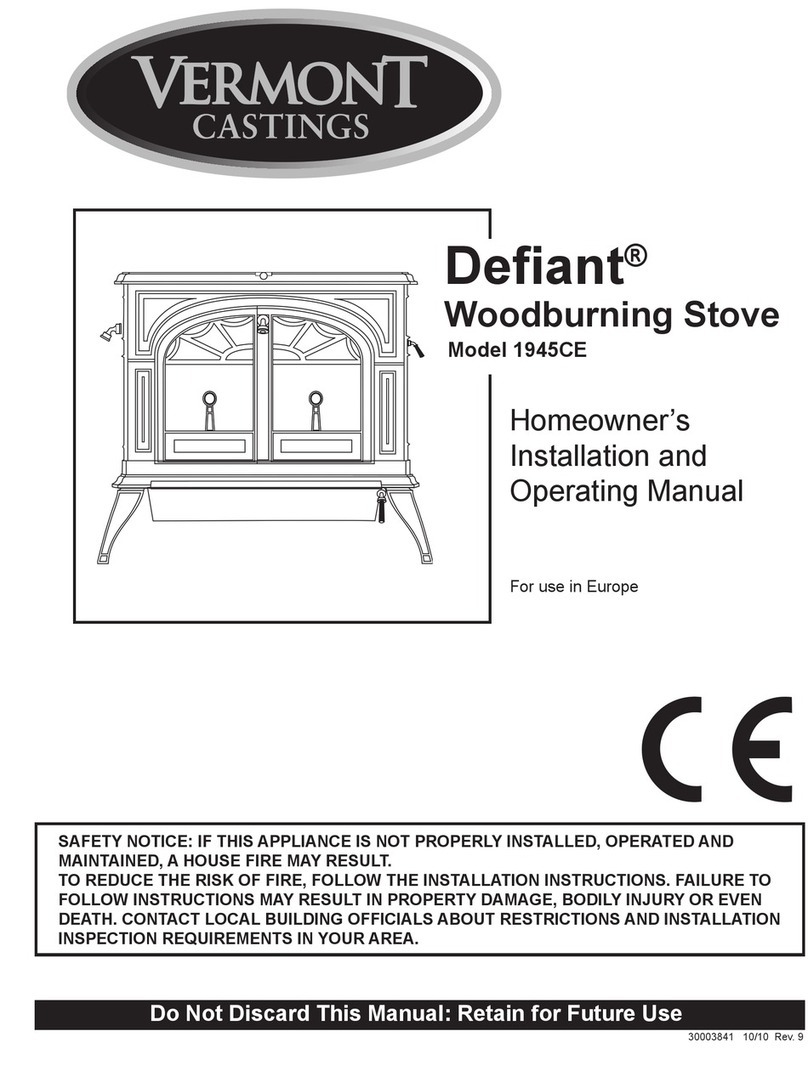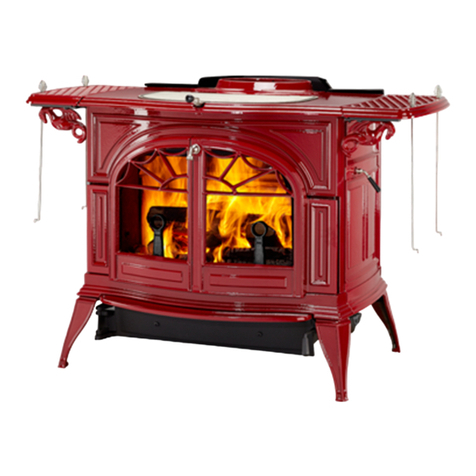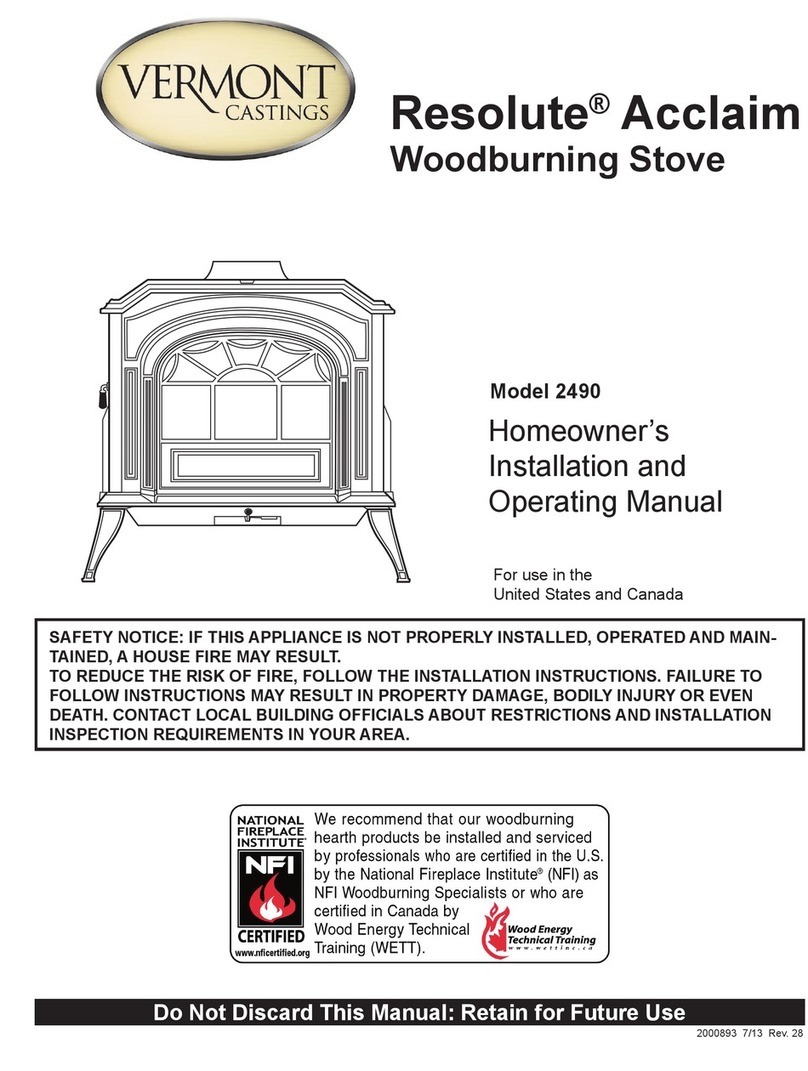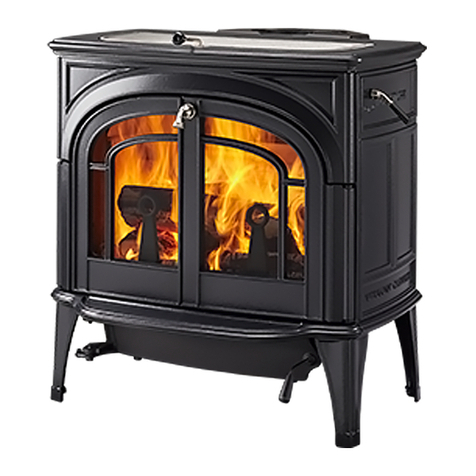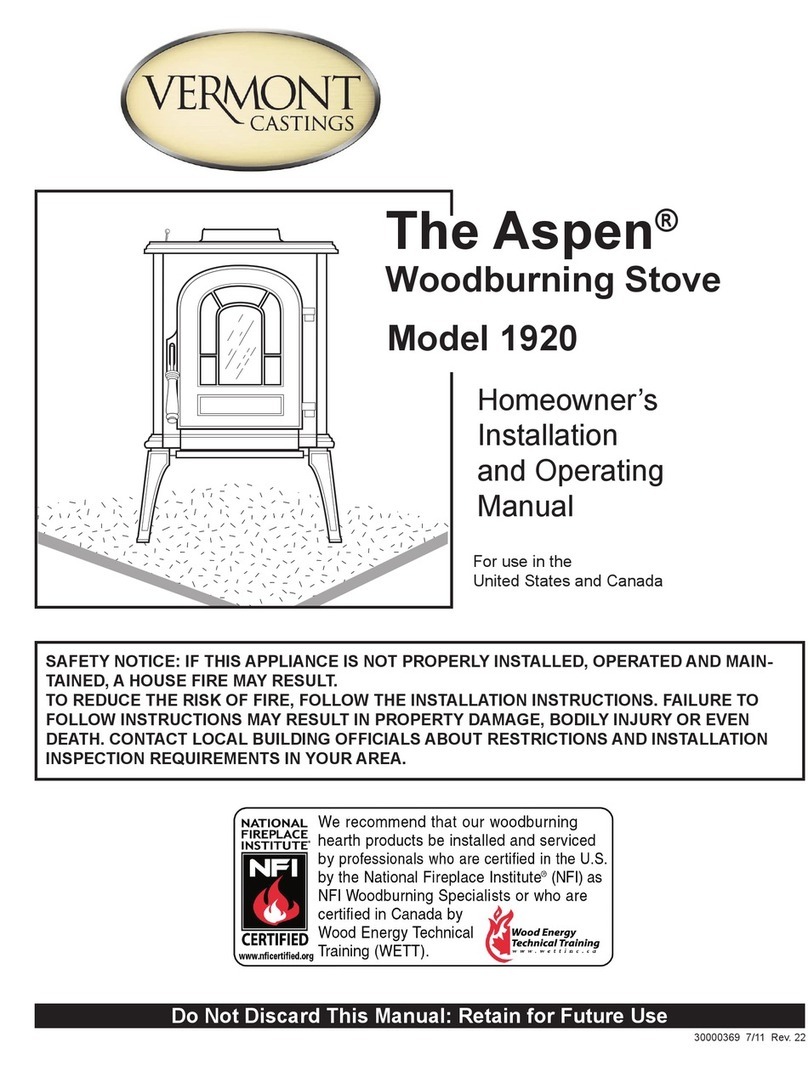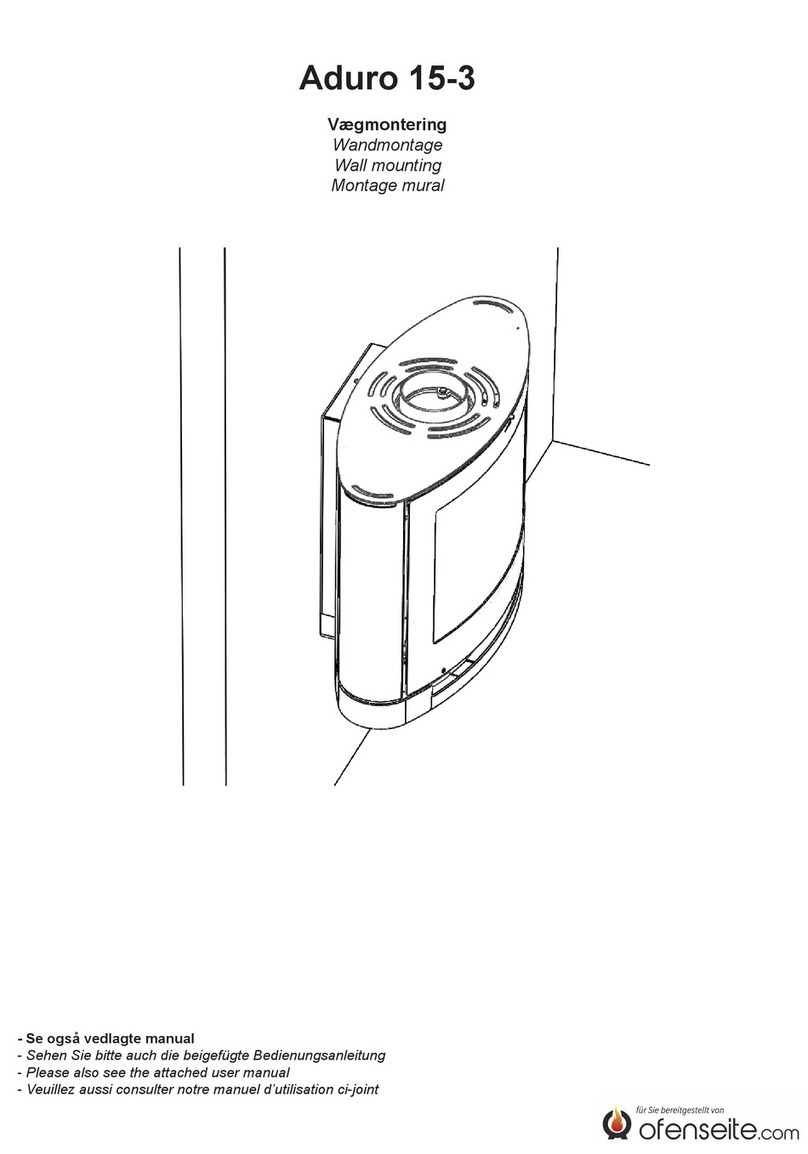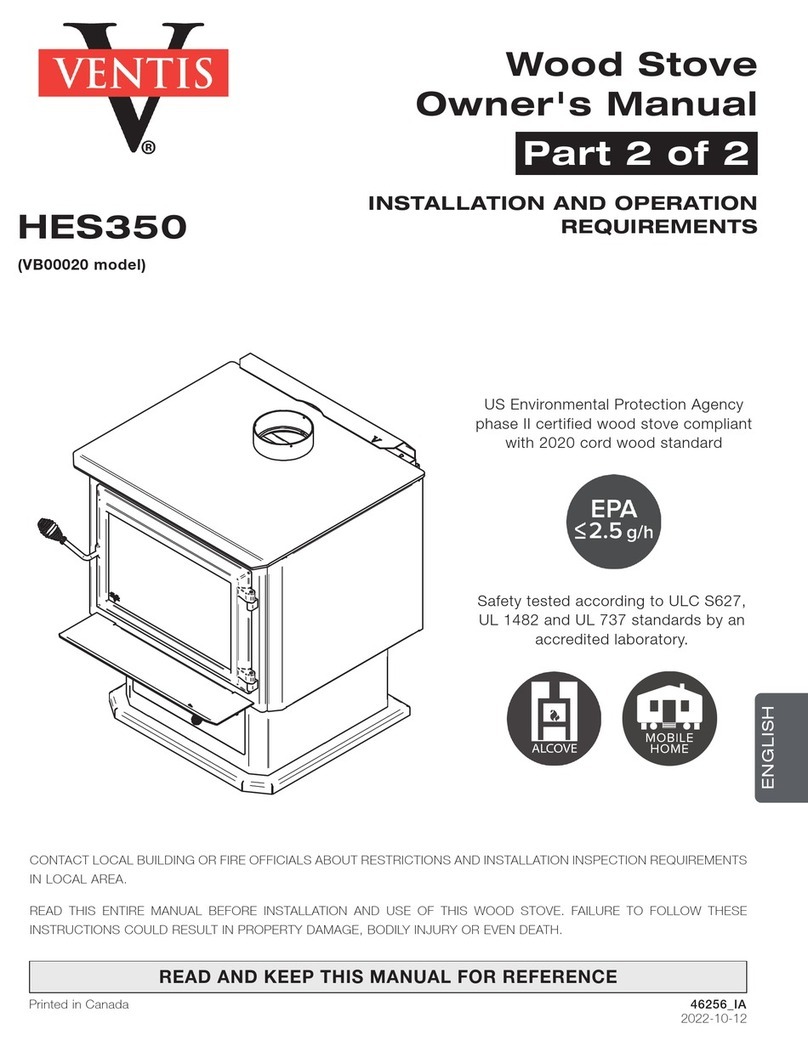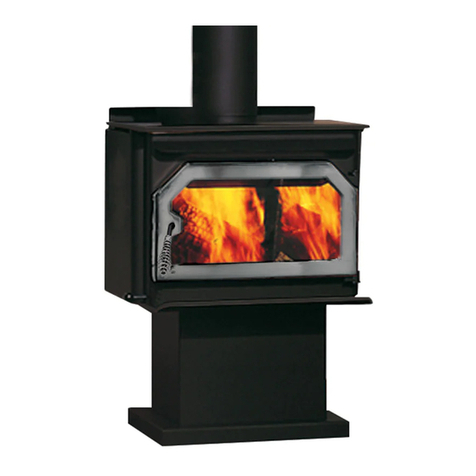
7
Intrepid®II Woodburning Stove
2000966
The listing for the Intrepid II for the U.S. and Canada in-
cludes use of double-wall chimney connectors that have
been tested and listed for use with solid-fuel burning ap-
pliances by a recognized testing laboratory.
Information on assembling and installing double-wall con-
nector is provided by the manufacturer of the double-wall
pipe. Follow the manufacturer’s instructions exactly as
you assemble the connector and attach it to the stove
and chimney. Using connectors and chimneys from the
same manufacturer makes the assembly and installation
straightforward.
• Beginning at the ue collar of the stove, assemble the
chimney connector. Insert the rst crimped end into the
stove’s ue collar, and keep
each crimped end pointing
toward the stove. Using the
holes in the flue collar as
guides, drill 1/8” (3 mm) holes
in the bottom of the rst sec-
tion of chimney connector and
secure it to the ue collar with
three #10 x 1/2” sheet metal
screws.
• Secure each joint between
sections of chimney connec-
tor, including telescoping
joints, with at least three sheet
metal screws. The pre-drilled
holes in the top of each sec-
tion of chimney connector
serve as guides when you drill
1/8” (3 mm) holes in the bottom of the next section.
• Secure the chimney connector to the chimney. Instruc-
tions for various installations follow.
• Be sure the installed stove and chimney connector are
correct distances from nearby combustible material.
Special slip pipes and thimble sleeves that form
telescoping joints between sections of chimney connector
are available to simplify installations. They often eliminate
the need to cut individual connector sections. Consult your
local dealer about these special pieces.
For prefabricated chimneys, follow the installation instruc-
tions of the chimney maker exactly as you install the chim-
ney. The maker of the chimney will supply the accessories
ST242
Chimney connector
12/13/99 djt
The crimped end of
the connector points toward
stove.
to support the chimney, either from the roof of the house,
at the ceiling of the room where the stove is installed, or
from an exterior wall.
Special adapters are available from your local dealer to
make the connection between the prefabricated chimney
and the chimney connector. The top of such adapters
attaches directly to the chimney or to the chimney’s ceil-
ing support package, while the bottom of the adaptor is
screwed to the chimney connector.
These adapters are designed so the top end will t outside
the inner wall of the chimney, and the bottom end will t
inside the rst section of chimney connector. When as-
sembled in this way, any soot or creosote falling from the
inner walls of the chimney will stay inside the chimney
connector.
For masonry chimneys, both freestanding and replace
chimneys may be used for installation of your Intrepid II.
ST243
thinble connection
12/13/99 djt
Thimble Sleeve
Chimney
Connector
Flue
Keep
sleeve
end
ush
with ue
tile
ST243
The thimble, made of either ceramic or metal, must be
cemented securely in place.
If the chimney connector must pass through a combustible
wall to reach the chimney, follow the recommendations in
the Wall Pass-through section that follows.
The opening through the chimney wall to the ue (the
“breach”) must be lined with either a ceramic or metal cylin-
der, called the “thimble”, which is cemented rmly in place.
The t must be snug and the joint between the thimble and
the chimney wall must be cemented. (Fig. 6)
A special piece called the “thimble sleeve,” slightly smaller
in diameter than standard connector and most thimbles,
will facilitate the removal of the chimney connector system
for inspection and cleaning. Thimble sleeves should be
available from your local dealer. (Fig. 5)
To install a thimble sleeve, slide it into the breach until it is
ush with the inner ue wall. Do not extend it into the actual
ue passage, as this could interfere with the draft.
The thimble sleeve should protrude 1-2” (25-50 mm) into
the room. Use furnace cement and thin gasketing to seal


